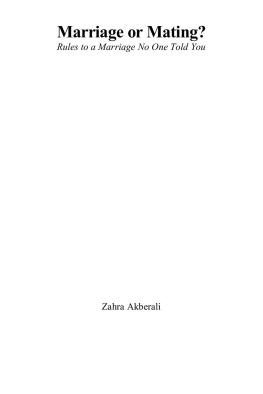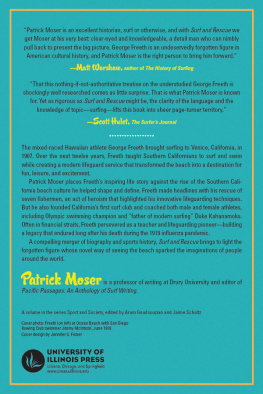First published in 1972 by George Allen & Unwin Ltd
This edition first published in 2018
by Routledge
2 Park Square, Milton Park, Abingdon, Oxon OX14 4RN
and by Routledge
711 Third Avenue, New York, NY 10017
Routledge is an imprint of the Taylor & Francis Group, an informa business
1972 George Allen & Unwin Ltd
All rights reserved. No part of this book may be reprinted or reproduced or utilised in any form or by any electronic, mechanical, or other means, now known or hereafter invented, including photocopying and recording, or in any information storage or retrieval system, without permission in writing from the publishers.
Trademark notice: Product or corporate names may be trademarks or registered trademarks, and are used only for identification and explanation without intent to infringe.
British Library Cataloguing in Publication Data
A catalogue record for this book is available from the British Library
ISBN: 978-1-138-62956-1 (Set)
ISBN: 978-1-315-15946-1 (Set) (ebk)
ISBN: 978-1-138-06055-5 (Volume 1) (hbk)
ISBN: 978-1-315-16302-4 (Volume 1) (ebk)
Publishers Note
The publisher has gone to great lengths to ensure the quality of this reprint but points out that some imperfections in the original copies may be apparent.
Disclaimer
The publisher has made every effort to trace copyright holders and would welcome correspondence from those they have been unable to trace.
A New Look at KUWAIT
by Zahra Freeth
The Hyrcanian deserts and the vasty wilds
Of wide Arabia are as thoroughfares now
The Merchant of Venice
LONDON GEORGE ALLEN AND UNWIN LTD
RUSKIN HOUSEMUSEUM STREET
First published in 1972
This book is copyright under the Berne Convention. All rights are reserved. Apart from any fair dealing for the purpose of private study, research, criticism or review, as permitted under the Copyright Act, 1956, no part of this publication may be reproduced, stored in a retrieval system, or transmitted, in any form or by any means, electronic, electrical, chemical, mechanical, optical, photocopying, recording or otherwise, without the prior permission of the copyright owner. Enquiries should be addressed to the publishers.
George Allen & Unwin Ltd 1972
ISBN 0 04 953008 9
Printed in Great Britain
in 12 point Fournier type
by Cox & Wyman Ltd,
London, Fakenham and Reading
Books about Arabia in general, and the development of the Gulf oil areas in particular, have in recent years sprung up as thickly as desert plants after rain. It may be thought that this particular area has been over-exploited, and I feel some diffidence in producing an addition to the existing literature.
My excuse is that I have known Kuwait both before and after the discovery of oil, through years which have changed not only the appearance of the town but the customs and outlook of its people. I believe also that the circle of my familys friends in Kuwait embraces people who are not often met by journalists or visitors.
This account of Kuwait is inevitably a subjective one. It has to be, since I am emotionally involved with Kuwait and its people. I have tried not to dwell disproportionately on the past. The new Kuwait is a powerful reality, a modern city ready to be judged on its merits, and the new generation who have made the transition into the twentieth century are impatient of westerners who are interested only in the picturesque life of the past. I have tried to do justice to the vitality and achievement of this new generation; I hope they will forgive me if in passing I have also remembered some of the charming features of their parents days, times which, though primitive, were a part of the history of their country of which they have no reason to be ashamed.
On a more personal note, I hope my readers will be tolerant towards the ubiquitous presence in my narrative of the character I have called V. Without V. there would be no story. V. is my mother.
Z.F.
Moyland, Essex
1971
Chapter 1
A City Built upon Oil
There have been times when I did not want to go back to Kuwait. I felt timid at the thought of finding a concrete jungle where once I had known sandy alleys between rough mud walls. The town of my childhood had gone, and I knew it had gone. It had been destroyed as effectively, if not as brutally, as by an earthquake; but the razing of the old Arab houses had been carried out with enthusiasm by the Kuwaiti leaders, in order to rebuild a bigger, better, more modern city.
Living in England I heard and read about the new Kuwait. To the newspapers it was an economic phenomenon, but I had known a warm-hearted human community; journalists made the city sound much like any other city, but I had personal memories of individual homes and people who had a special place in my affections. Did it still retain anything of its original Arab character, or was it now just another cosmopolitan agglomeration of concrete city blocks? I could not guess what affluence had done to the people; had the Kuwaitis abandoned old ways, old attitudes, or had prosperity provided the means for them to develop and enrich their lives while keeping their national traditions and character?
In the end the only thing to do was to go back and find out for myself.
So I went back.
Having flown in after dark I had to wait till the following morning for the eye-catching garishness of new Kuwait to make its full impact. I had to forget I was in a town I had once known; it was no use trying to get my bearings from old landmarks. The old has been wiped out. I could not know where I was even from the contours of the land, for the prominent hill which formed the hub of the old city has been levelled. New streets have been created without reference to the old winding alleys; towering new marble-faced office-blocks give no hint of what was there before they rose to dominate the modern scene. Here are multi-storey government and commercial buildings, streets of plate-glass-fronted shops, international hotels. Though one may wish their architects had attempted a style more traditionally Arab in feeling, one is still left gasping at the scale of Kuwaiti growth and change, and the administrative energy which has commissioned and carried out the vast new construction projects.
Proud of its transition from the old autocracy to a democratic form of government, Kuwait has the required quota of administrative buildings to house its new legions of bureaucrats. I was unprepared for the imposing size and opulence of the Municipality Office, the National Assembly building, and the Ministry of Guidance and Information, huge structures of glass and concrete which outshine the other landmarks of the towns business centre. The whole of this ultra-modern centre is evidence of Kuwaits boundless self-confidence, and her determination to show that in material and technological achievement this small state is among the most advanced in the world.












